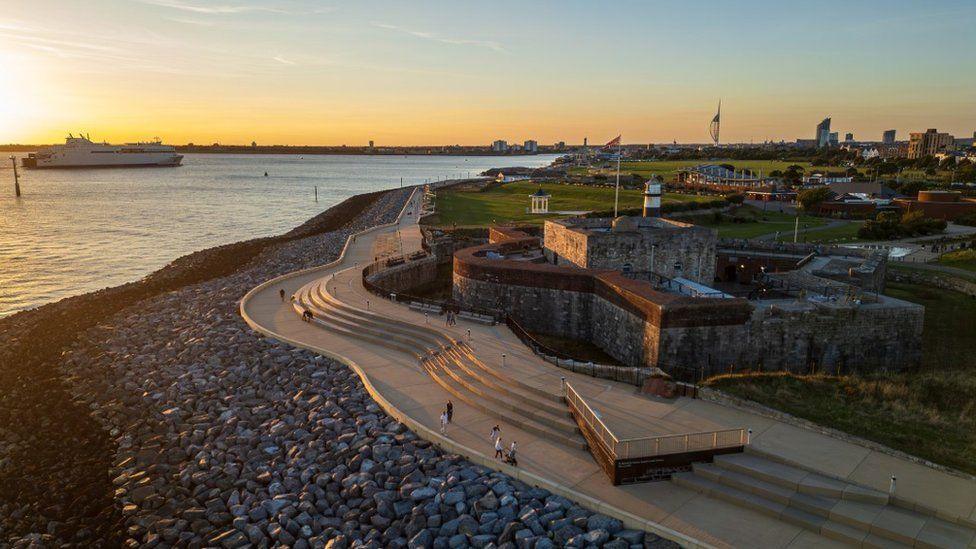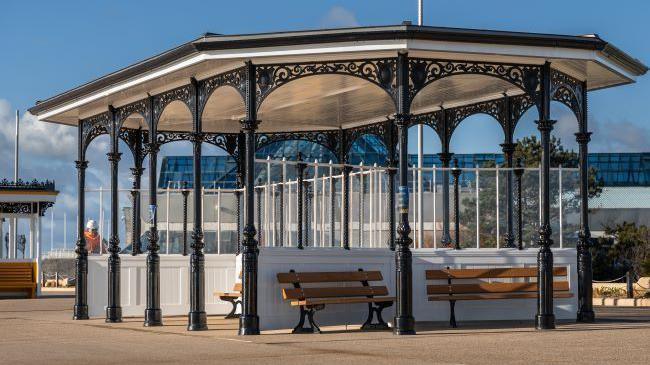Ruins of 300-year-old sea wall clad in etched steel

The steel has been etched to show a representation of the original stonework
- Published
The remains of a 17th Century sea wall uncovered a during coastal defence scheme has been clad in steel to protect it.
The triangular-shaped structure, in front of Southsea Castle, was revealed by archaeologists during work to protect Portsmouth homes at risk from rising sea levels.
The area above the wall's remains has been outlined by steel cladding etched with its details from archaeologist's drawings.
A promenade platform has been built over the historic wall, designed by the Dutch engineer Bernard De Gomme, to preserve it.

Drawings of the remains of the sea wall seen by archaeologists decorate the steel triangle in front of Southsea Castle.
Archaeologist Jann Beresford, who witnessed the discovery of the exposed remains, provided the drawings of the original stonework for the cladding.
She said: "Throughout the development of the Southsea Coastal Scheme the heritage of the site has been central, and it has been amazing to be part of this.
"To have my drawings of the 17th-Century revetments which were uncovered during the work displayed for those using the promenade is a great honour."
The lights along the promenade of the Southsea Coastal Scheme were captured by drone as they were tested
The Southsea Coastal Scheme stretches along a 2.8-mile (4.5km) section of coast from Old Portsmouth to Eastney.
Phase one of six of the scheme started in September 2020 - it is due to be completed in 2029.
Poem, 'The Theatre of the Sea', written by the Poet Laureate Simon Armitage has also been set into the seawall along with a plaque south of Southsea Castle.
The poem's title comes from the name given to the tiered promenade around the castle.
Get in touch
Do you have a story BBC Hampshire & Isle of Wight should cover?
You can follow BBC Hampshire & Isle of Wight on Facebook, external, X, external, or Instagram, external.
- Published24 May 2024

- Published16 January
